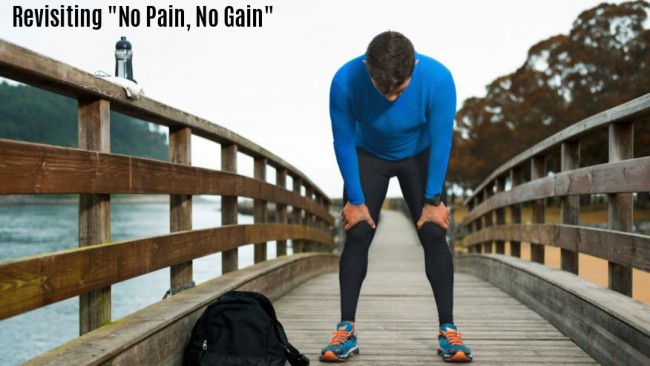Revisiting “No Pain, No Gain”

Pain is complex, and at its most primal level, is a warning sign of possible damage to your body. When most people exercise, they hope to improve their body, not damage it further. So, why would you want to experience pain in order to gain fitness?
The expression “No pain, no gain,” was first marketed by Jane Fonda in her popular series of workout videos. The expression is meant to encourage a person to embrace the experience of muscle burn that is associated with aerobic exercise. This temporary, somewhat unpleasant burn is an essential part of improving the fitness of your body, and is a long-established principle of basic exercise and conditioning. This pain may lead to muscle soreness and may last between 24-48 hours. This is a perfectly normal, and very healthy response to exercise.
Pain that lasts past this time period may be a sign that the pain is actually blocking your ability to make gains. If your body is sending a signal to your brain that damage is persisting past 48 hours, it is trying to get your brain to listen! Or, if you have chronic pain, and just try to push your way through exercise, stop. Exercise, especially if you have chronic pain, should be a pleasurable experience.
If the only “benefit” you get out of exercise is pain, re-examine your fitness program and approach. Or, better yet, see a physical therapist to discuss ways to alter your program and re-balance your body.
Assuming you have some baseline level of pain, use a traffic light to guide your exercise activities.
- Green Light: Good to go! Keep doing what you are doing.
o Pain may spike 1-2 points on a 10-point scale, but is no worse afterwards.
o If it increases, it lasts for a maximum of 24-48 hours before returning to baseline
- Yellow Light: Slow down, and re-evaluate your approach.
o Pain is worse during and after exercise and remains worse after 48 hours.
o Use rest, ice, and any other pain relievers to manage.
- Red Light: STOP immediately. See a medical provider.
o Pain spikes significantly during and after exercise.
o You notice a marked decrease in muscle strength, or can’t move a joint
o You notice significant swelling, redness, bruising.
Perhaps a better way to look at it is “KNOW pain, KNOW gain.”